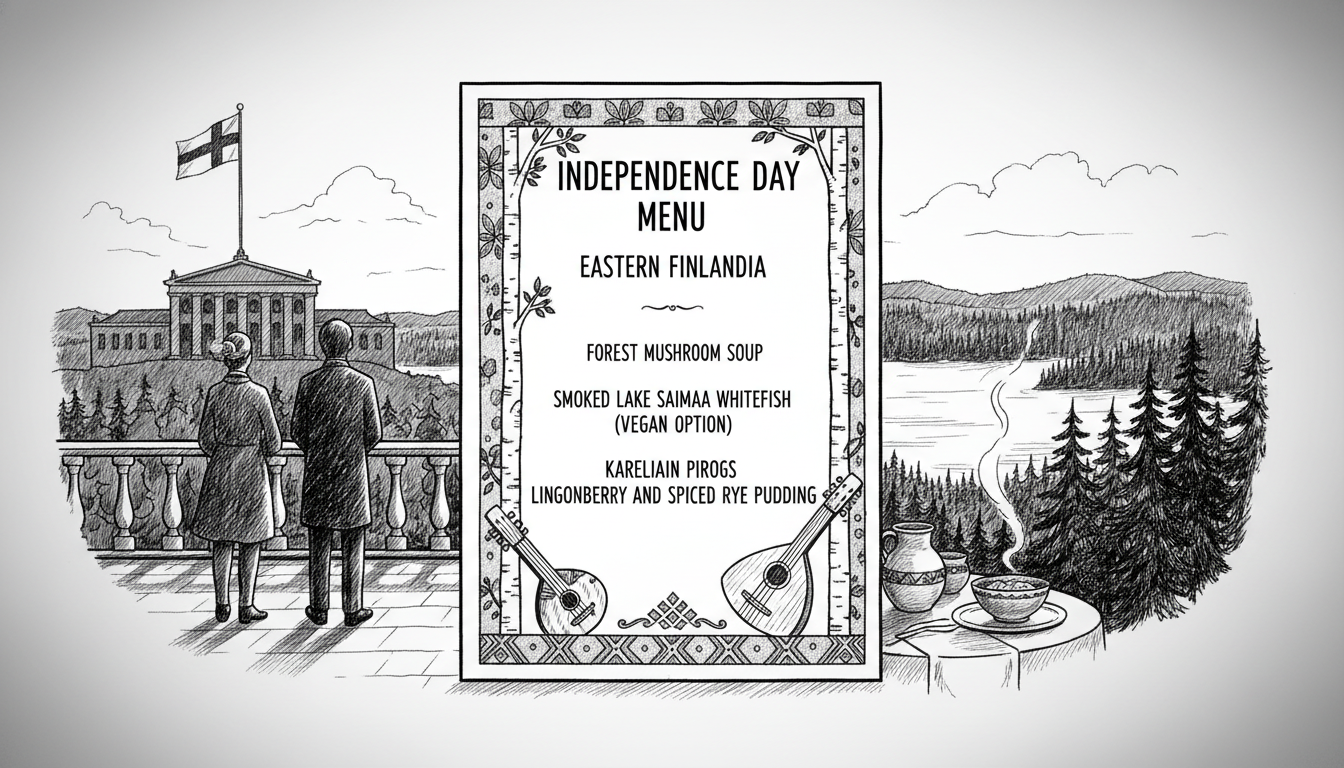The Presidential Palace has unveiled its menu for Finland's Independence Day reception with a distinct Eastern Finland culinary theme. Kitchen Master Jyrki Jääskeläinen presented the traditional menu during Thursday's press briefing ahead of the December celebrations. The menu emphasizes organic ingredients and small-scale producers' expertise, reflecting Finland's commitment to sustainable food systems and regional culinary heritage.
Guests will sample traditional Karelian pastries alongside meat and apple turnovers, featuring turnip and vendace stuffed dishes. The menu highlights Lemi's särä, a Southern Karelian specialty of lamb and potatoes baked in wooden containers within traditional baking ovens. This cooking method represents centuries-old Finnish culinary traditions preserved in rural communities.
Finland's Independence Day celebrations carry deep political significance beyond the culinary offerings. The annual reception at the Presidential Palace brings together politicians, diplomats, and cultural figures in Helsinki's government district. These gatherings often facilitate informal policy discussions that can influence Finnish Parliament proceedings during the winter session.
The menu's regional focus demonstrates Finland's cultural policy of celebrating diverse regional traditions within national events. Each dish tells a story of local foodways and agricultural practices, from the berries decorating the cream cake harvested from the Kultaranta garden to the fish from Eastern Finland's lake systems. This culinary approach supports the government's rural development objectives while maintaining cultural continuity.
International observers note how Finland uses gastronomic diplomacy to showcase its food security policies and sustainable agriculture. The EU's Farm to Fork strategy aligns with Finland's emphasis on local sourcing and traditional food knowledge. This year's Eastern Finland theme particularly highlights border region cultures that maintain distinct culinary practices while contributing to national identity.
The Independence Day menu selection process involves careful consideration of seasonal availability and cultural representation. Kitchen staff work with producers months in advance to secure ingredients that meet both quality standards and symbolic importance. This year's emphasis on Eastern Finnish specialties continues a pattern of rotating regional highlights that began decades ago.
Food historians recognize how these menus document evolving Finnish culinary traditions while maintaining core national dishes. The inclusion of both familiar staples like Karjalanpiirakka and lesser-known regional specialties like särä demonstrates Finland's balancing of national unity and regional diversity. This approach reflects broader Nordic cultural policies that value local distinctiveness within shared national frameworks.

